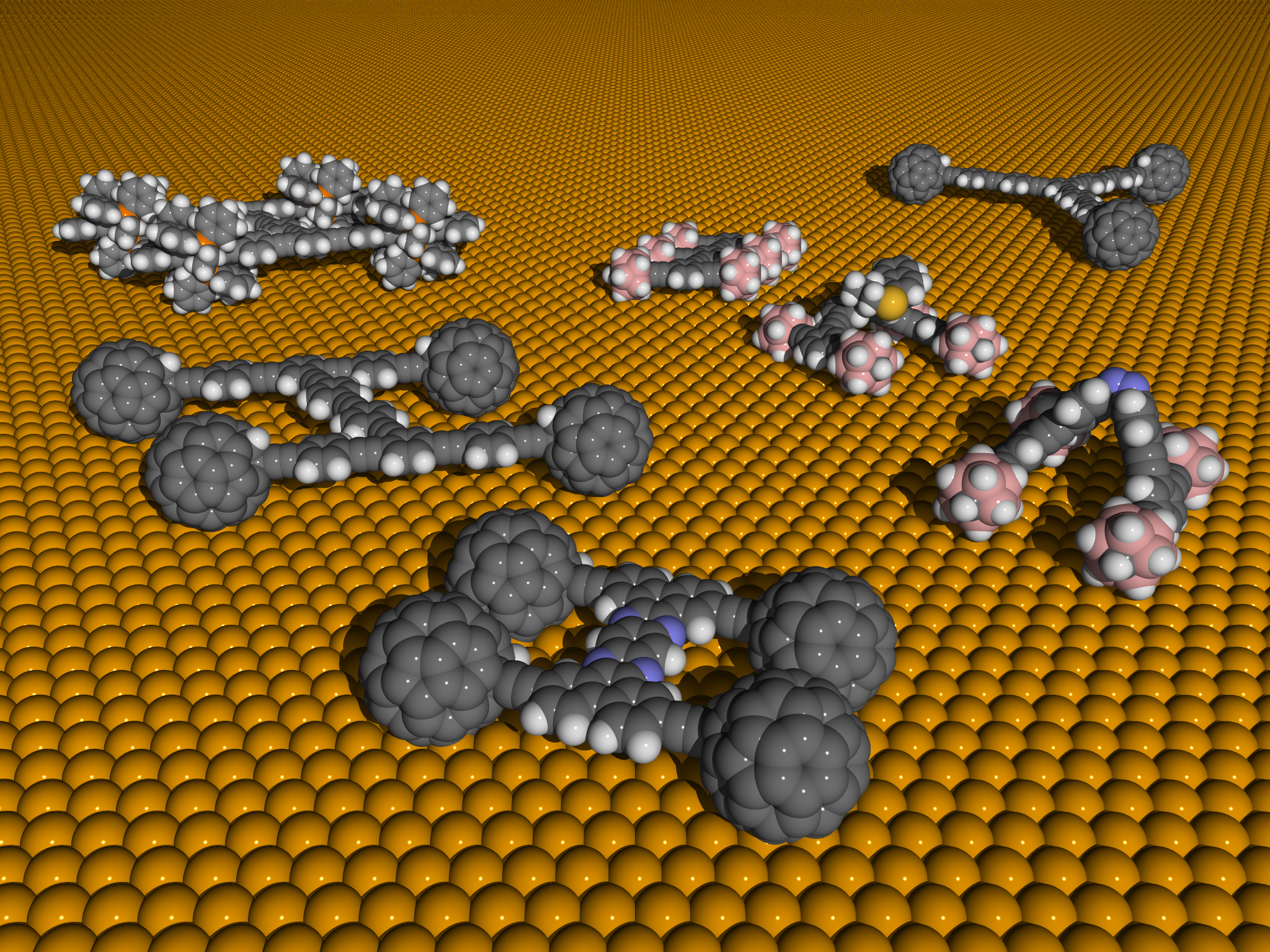 Representation of single-molecule
nanocars on a flat metallic surface. A National Science Foundation-funded
research team led by James Tour of William Marsh Rice University designed and
synthesized this class of molecular machines that resemble macroscopic vehicles
and are designed to convert energy inputs such as heat, electric fields or
light into controlled motion on a surface, ultimately leading to transport of
nanocargo.
Representation of single-molecule
nanocars on a flat metallic surface. A National Science Foundation-funded
research team led by James Tour of William Marsh Rice University designed and
synthesized this class of molecular machines that resemble macroscopic vehicles
and are designed to convert energy inputs such as heat, electric fields or
light into controlled motion on a surface, ultimately leading to transport of
nanocargo.
Designed to be studied at the
single-molecule level by scanning probe microscopy (SPM), these so-called
nanocars are composed of a chassis connected to wheel-terminated axles. The
rotation of the nanocar wheels induces a directional rolling of the nanocars on
a surface. C60 fullerene wheel-based nanocars allowed the demonstration of the
directional rolling mechanism of a nanocar on a gold surface by scanning
tunneling microscopy (STM). Functional nanocars for transporting atoms and
molecules and new molecular wheels have also been developed. Complementary
single molecule imaging techniques such as STM, atomic force microscopy (AFM),
and single molecule fluorescence microscopy, as well as molecular dynamics,
have been used to study these nanocars. [Research supported by NSF grant ECCS
07-08765.]
(Date of Image: July 2009)
Credit: James Tour, Rice University






No comments:
Post a Comment